Keywords are a critical part of your site’s traffic generation strategy. But what if you can’t identify the keywords people are using to access your site? Keep reading to see how Google’s encrypted search update will affect your bottom line—unless you start to rethink your SEO strategy altogether.
On Friday, Google unleashed a change that search experts have called one of the most significant changes for online marketers, ever. And if you weren’t looking for it, you probably missed it. What was the update? Google now serves up all search queries on an encrypted connection.
Here’s what we’re talking about. Before Friday, this is what a URL for a search results page looked like this:
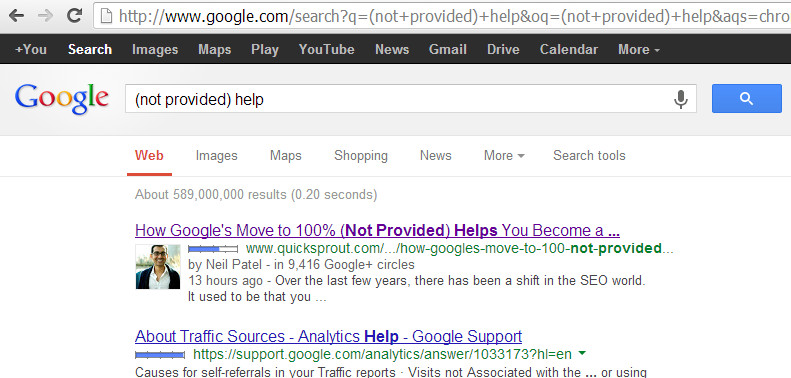
After Friday’s monumental change, however, here’s what the search results page looks like:
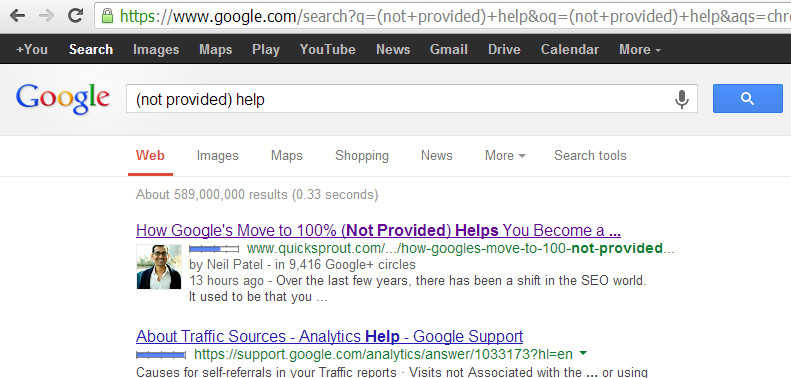
I know what you’re probably thinking: “What’s the big deal? You can’t even see the difference!” Look a little more closely and you’ll see the difference: http vs. https. It’s a one-character difference, but you won’t believe how much it may change your SEO strategy. Let’s take a look at the impact of Google’s encrypted search update.
Before Google’s (Not Provided) Change
In May 2010, Google announced its intentions to begin encrypting search results for its users. If users were signed into their Google accounts (Gmail, Google Analytics, YouTube, etc.), then Google would hide the data of those searches from the public. If users weren’t signed in, however, then their search data would be passed along to the public.
What did it mean for sites like yours? Unless someone was signed into a Google account, you could track the exact keyphrases that she/he used to discover your site. Moreover, you could see exactly which keywords were driving the most traffic to your site—and then build content around those keywords to continue driving that traffic to your site.
Search encryption started off a small project but soon grew to block off over half of search results from the eyes of the public, instead creating a new category: (Not Provided). To see the growth of (Not Provided) keywords since 2011, check out this site. Still, though, before Friday, you could still see a decent sample of your site’s keyword-driven traffic.
Google Analytics keyword data looked something like this for most sites, with a portion of keyword searches marked (Not Provided) but many still available for analysis.
After Google’s (Not Provided) Change
So what happened on Friday? Google expanded their encrypted search to include all Google search results. Not just those of people who are signed into Google services. Every single one.
To see what I mean, log out of your Google account and try a search. You’ll see the https we talked about earlier—even though you’re not signed into a Google product.
In other words, within a couple of weeks, you will lose complete access to Google’s keyword data for your site. You will no longer be able to track which keywords visitors type in to arrive at your site.
So what are the steps forward for someone who’s relying on keywords to drive traffic, sell products, and keep your business afloat?
Surviving In Spite of (Not Provided) Keywords
So what do you need to know to drive traffic to your site now that keywords are impossible to track? Start with this short list of action-steps for growing your traffic after Google’s encryption changes.
1) Start producing quality content—not just lots of keywords.
Without access to Google’s search data, you’re not going to be able to create content using a stock list of keywords. After all, you don’t know which keywords will work for your site. Instead, you need to get serious about producing relevant, thoughtful, engaging content for your visitors. Write for your users first; consider the search engines after the fact. Now more than ever, content is king.
2) Start thinking about the performance of your pages—not just the performance of your customers.
Tracking keywords in Google Analytics shifted the focus from the content on your site to the things your customers were typing in in order to find you. Let’s face it—if your traffic doesn’t depend on improving your site, who’s going to take the time to do it? Search encryption forces you to focus on if your pages are doing what you want them to do: driving customers to pursue your services.
How do you make it happen? Choose keyphrases around which to build specific pages on your site, and then track the rankings and performance for those specific pages—not the keywords on those pages.
3) Start tracking your rankings for the keywords you’re trying to rank for.
Google Analytics’ keyword tracking provided an excuse not to track rankings for your site; after all, Google was showing you exactly how people were arriving at your site. Now, if you want to see how they’re arriving at your site, you’ll need to use a third-party tool like SEOProfiler to track your site’s rankings.
4) Start paying attention to Google Analytics’ page data—not just keyword data.
Now that keywords will be much more difficult to track, you need to pay more attention to Google’s Analytics data for the pages on your site. Get acquainted with Google’s “Landing Page” data, where you can see what the top entry points are for your site. If you’re crafting pages around specific keywords and those pages are popular landing pages, then you can assume that you’re ranking well for those keywords.
What are some indications of a converting landing page? A low bounce rate, a high number of page views, and a large visit duration. Keywords were useful for tracking how visitors arrived at your site. Post-encryption, though, you have an opportunity to focus on answering two key questions: where visitors land on your site and what they do once they’re there. And answering those questions will drive sales.
Without question, the Google landscape changed significantly on Friday. But it doesn’t have to set your site back. It might require a little refocusing, but, if you can roll with the punches, you’ll see increased traffic and boosted conversions as a result.
 Branding
Branding Strategic Marketing
Strategic Marketing Creative Concepts
Creative Concepts Web Services
Web Services Speaking & Consulting
Speaking & Consulting Website Maintenance
Website Maintenance Careers
Careers Tools We Suggest
Tools We Suggest 10 Tips to Transform Your Marketing
10 Tips to Transform Your Marketing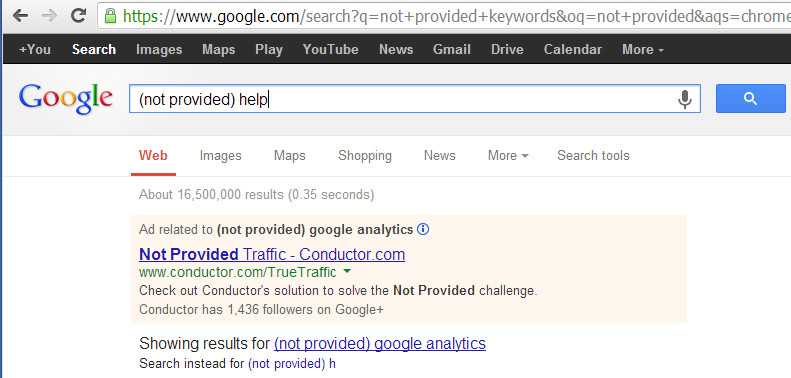
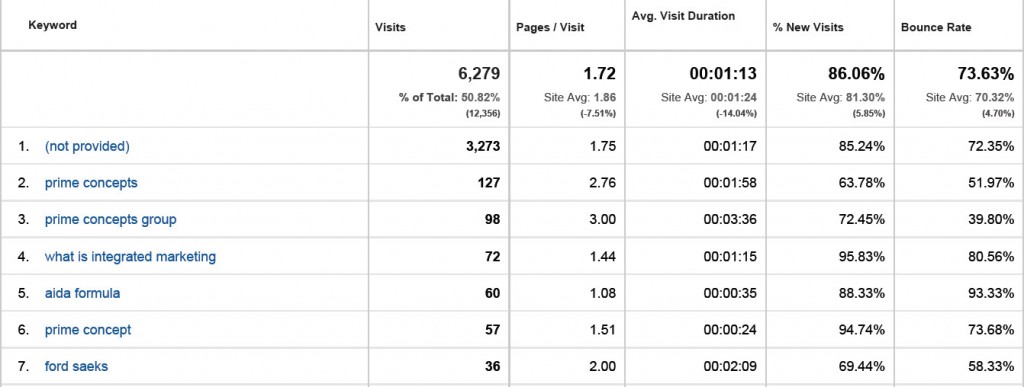
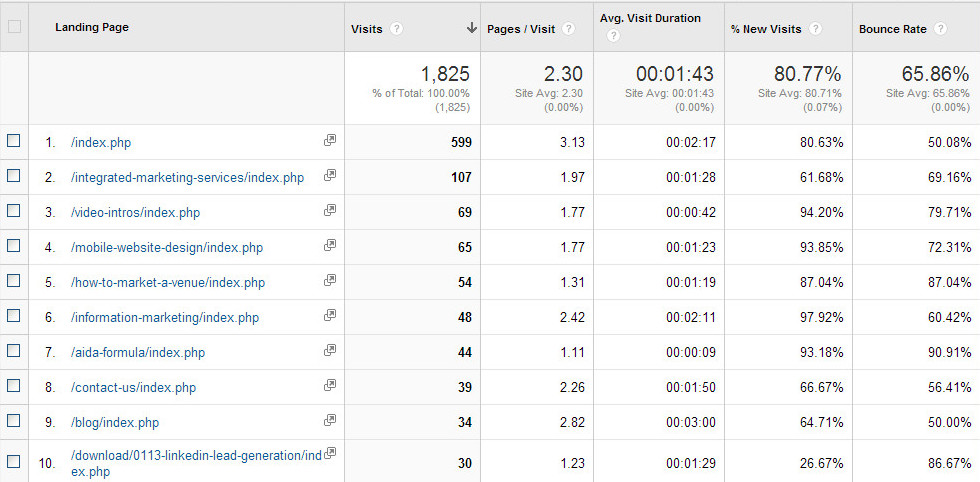



0 Comments